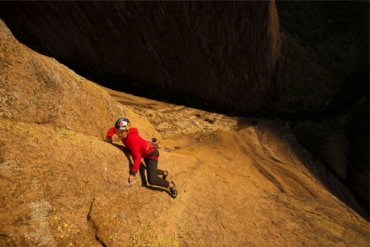It is a foreign concept to most climbers in America. But in Europe, a mountaineering discipline called via ferrata — Italian for “iron way” — is an immensely popular way to get off the ground.
Developed during World War I as a method to move troops through the Dolomite Mountains in Italy, via ferrata routes add artificial features like ladder rungs, bolts, bridges, and cables to blank mountain walls.

Today, via ferrata is a bonafide sport in the Alps, where hundreds of routes grant access to cliffs and mountain peaks. On a recent trip to Switzerland, I clipped in to a via ferrata cable to give the sport a try.
I was visiting Engelberg, a mountain resort town south of Zurich. The route, an immense climb on Engelberg’s Furenwand wall, snaked up a 2,000-foot limestone face.

Gear for via ferrata includes special lanyards that connect to a climbing harness and feature two shock-absorbing arms. A pair of locking carabiners sit at the end of each arm, ready to connect you to the climb.
In lieu of a rope, on a via ferrata you clip the carabiners into a cable that is affixed to the rock with anchor bolts. You climb and pull the carabiner-equipped lanyards behind, unclipping one ‘biner at a time to pass each fixed anchor point.

On the Furenwand, the whole way up I stayed clipped into the cable. It was my backup parachute as I reached, stepped on the rock, pulled ladder rungs, and squirmed ever upward on the airy face.
I tested via ferrata lanyards from Petzl and Black Diamond, two major climbing-equipment companies. The Black Diamond Easy Rider kit, which has extendable, bungee-style lanyards and special squeeze-to-unlock carabiners, proved easiest to use. It costs $99.50.
continued on next page. . .





